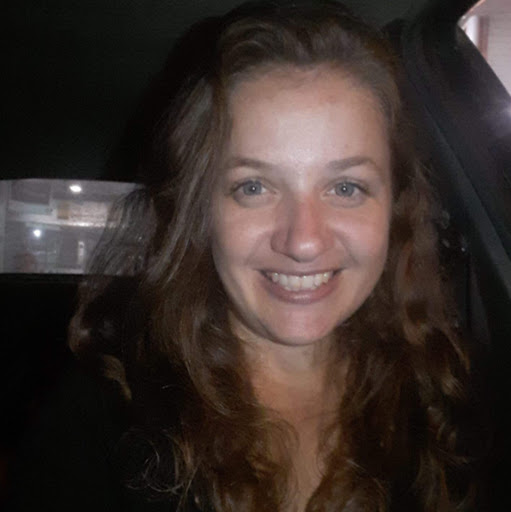Melissa L Ricci
age ~42
from Quincy, MA
- Also known as:
-
- Melissa L Dunseath
- Phone and address:
-
71 Barbour Ter, Quincy, MA 02169
6177805740
Melissa Ricci Phones & Addresses
- 71 Barbour Ter, Quincy, MA 02169 • 6177805740
- Medford, MA
- Somerville, MA
- Flagstaff, AZ
- Cambridge, MA
- Scottsdale, AZ
- Carefree, AZ
- Allston, MA
Resumes

Melissa Ricci
view source
Junior Counselor
view sourceWork:
Junior Counselor

Melissa Ricci
view sourceLicense Records
Melissa Ricci
Address:
Quincy, MA 02169
License #:
7252 - Active
Issued Date:
Aug 27, 2007
Expiration Date:
Jan 6, 2018
Type:
Speech Language Pathologist
Melissa Ricci
License #:
NA47138 - Active
Category:
Nursing Assistant
Issued Date:
Mar 31, 2014
Expiration Date:
Jun 30, 2017
Type:
Nursing Assistant
Name / Title
Company / Classification
Phones & Addresses
FUNTISTIC DESIGNS LTD
Us Patents
-
Non-Invasive Colorimetric-Based Infection Detector And Infection Detecting Bandage
view source -
US Patent:20100178203, Jul 15, 2010
-
Filed:Jan 15, 2009
-
Appl. No.:12/354708
-
Inventors:James A. Kane - Needham Heights MA, US
Melissa Ricci - Needham Heights MA, US
Ranganathan Shashidhar - Needham Heights MA, US -
Assignee:POLESTAR TECHNOLOGIES, INC. - Needham Heights MA
-
International Classification:G01N 21/78
-
US Classification:422 56
-
Abstract:A non-invasive, calorimetric infection detector is provided, comprised of a substrate, and one or more indicator compositions disposed upon or incorporated therein. These indicator compositions exhibit a persistent change color when exposed to gaseous oxides of nitrogen and acids formed therefrom, providing a means of detecting NO production in a wound, which has been found to occur at a high level at the onset of infection in a wound. In addition, a bandage is provided, comprised of the detector, as well as a porous portion, and preferably a hydrophobic barrier layer to protect the detector from contamination by water and other fluids draining from the wound. The non-invasive, calorimetric infection detector, and bandage containing same, can be utilized to provide a convenient, easily utilized colorimetric means of detecting the onset of wound infection, thereby enabling caregivers to effectively and timely treat infections.
-
Electronic Device And Corrosion Resistant Electrode Stack Therein
view source -
US Patent:20130263921, Oct 10, 2013
-
Filed:Apr 10, 2012
-
Appl. No.:13/443559
-
Inventors:Lauren Plavisch - Cambridge MA, US
Melissa Ricci - Belmont MA, US
John C. Warner - Wilmington MA, US -
International Classification:H01L 31/0224
H01L 51/44 -
US Classification:136256, 136263
-
Abstract:Disclosed and claimed herein is an electrode stack having a first electrode, an electrolyte comprising a REDOX couple, a conductive layer disposed on a substrate, wherein the conductive layer is a flaked conductor, and a binder and wherein the conductor is chosen to resist corrosion in the presence of the electrolyte.
-
Methods For Manufacturing Of Heterogeneous Rigid Rod Networks
view source -
US Patent:20210039987, Feb 11, 2021
-
Filed:Jan 23, 2019
-
Appl. No.:16/964520
-
Inventors:- Westwood MA, US
Melissa J. RICCI - Belmont MA, US
Colleen E. TREACY - Somerville MA, US
Viktor VEJINS - Concord MA, US -
International Classification:C03C 17/00
C03C 17/10
C03C 17/22
H01B 1/22
H01B 1/24
C09D 11/50
C09D 11/037
C01B 32/159
C01B 32/174 -
Abstract:Interlaced random networks of heterogeneous, rigid rod like particles such as metallic nanowires and carbon nanotubes are formed by various methods. The resulting combination provides characteristics that are unique and not attainable by either of the individual components on their own. In one of the embodiments, such heterogeneous networks are continuously formed on a master hot roller surface by application of the rigid rod components from separate sources and the post formed network is transferred fully or partially onto a receptor surface of a moving web directly in-contact with the master surface. In another embodiment the heterogeneous networks are formed on the said master surface or hot roller by applying formulations that are co-stabilized dispersions of heterogeneous, rigid rod like particles in a common solvent. In yet another embodiment, such heterogeneous networks are formed by contacting the receptor surface with more than one such master surface or hot roller.
-
Device For Capillary Force Sample Loading And Improved Assay Performance
view source -
US Patent:20190054463, Feb 21, 2019
-
Filed:Jul 10, 2018
-
Appl. No.:16/031794
-
Inventors:- Woburn MA, US
Melissa Ricci - Belmont MA, US -
International Classification:B01L 3/00
G02B 21/34 -
Abstract:Embodiments include devices and methods that enable loading of a fluid sample by capillary action and provide for subsequent thinning of the fluid layer for imaging of a processed sample. A device includes a substrate, a transparent cover, and one or more pillars separating the transparent cover from the substrate where the height of the one or more pillars sets a spacing between the transparent cover and the substrate prior to introduction of a fluid sample to the device. The one or more pillars may be soluble in aqueous fluids and/or soluble in a component of the fluid sample. The spacing between the substrate and the transparent cover may be configured to draw the fluid sample into a space between the substrate and the transparent cover via capillary forces.
Myspace

Susan Melissa Ricci Uscata
view source
Melissa Ricci
view source
Melissa Ricci
view source
Melissa Ricci
view source
Melissa Short Ricci
view source
Melissa Hopta Ricci
view source
Melissa Ricci Kasper
view source
Melissa Ricci Ranucci
view sourceYoutube
Googleplus

Melissa Ricci

Melissa Ricci

Melissa Ricci

Melissa Ricci

Melissa Ricci

Melissa Ricci

Melissa Ricci

Melissa Ricci
Plaxo

Melissa Ricci
view sourceClassmates

Melissa Ricci
view sourceSchools:
Marian High School Mishawaka IN 1971-1975
Community:
Mary Ammerman, Cecilia Wehrly

Melissa Durand (Ricci)
view sourceSchools:
Bridgewater-Raynham Regional High School Bridgewater MA 1993-1997
Community:
Cheryl James, Patricia Maguire, Gregg Wheeler

Melissa Ricci
view sourceSchools:
G.A.M.P. High School Philadelphia PA 1991-1995
Community:
Jerry Bee

Melissa Ricci
view sourceSchools:
Gardenview Elementary School Montreal Kuwait 1991-1998
Community:
Karen Hoffman, Carmen Wu, Lidia Sciullo, Angela Raimondo, Jillian Gillman, Laura Bielecki, Nou Nou, Elijah Winsborrow, Denise Lazaru, Susan King, Ariel Samana, Brian Smirnow

Melissa Ricci
view sourceSchools:
Antoine-Bernard High School Carleton Kuwait 2002-2006
Community:
Rachelle Englehart, Johnny Boudreau, Jonathan Leblanc, Marie Bernard, Melissa Cyr, Loubert Jenny, Guillaume Ouellet

Melissa Ricci
view sourceSchools:
Parkway South High School Manchester MO 1998-2002
Community:
Brian Grandberry, Brad Jackson, Keana Rounds

Melissa Ricci | Governor ...
view source
Gardenview Elementary Sch...
view sourceGraduates:
Melissa Ricci (1991-1998),
Gail Schwarz (1961-1968),
David Williams (1955-1957),
Shelley Joffe (1958-1966)
Gail Schwarz (1961-1968),
David Williams (1955-1957),
Shelley Joffe (1958-1966)
Get Report for Melissa L Ricci from Quincy, MA, age ~42







